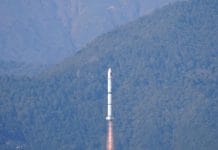In the modern hybrid cloud environment, mainframe computing plays a pivotal role and is here to stay.
“I used to hear people say that the platform would shift from mainframes to client-server, or that the mainframe is dying out,” said Jose Castano, Vice President, Worldwide Sales of IBM’s Z series & LinuxOne.
“I don’t hear that anymore. The expression I use is that the world’s global economy runs in the mainframe. If all mainframes were to stop today, you couldn’t issue a credit card, work with your bank, reserve an airline ticket, or even claim insurance, most likely,” Castano told Business Today.
Underlying Castano’s confidence in the mainframe – and more specifically, the recently-launched z16 – are the sales performance figures since the z16 being made generally available at the end of May 2022.
“The first quarter of z16 made it the most successful programme for IBM in 20+ years. In fact, it surpassed to date the z15 programme, which was itself one of the most successful programmes in recent history. Q4 2022 in EMEA (Europe, Middle East, and Africa) was the most successful quarter for Z as far back as we can look,” said Castano.
According to Catherine Lian, Managing Director for IBM Malaysia, the z16 launch has received very positive feedback from IBM customers. “Since then, we have got a few banks that have embarked into the z16 modernisation journey,” she said.
Lian noted that other than banking and finance, several other key sectors where the z16’s modern capabilities present high potential and opportunity for transformation include government spending, trade, agriculture, health, tourism, content, services, and the digital economy – the same 9 focus areas identified under MDEC’s Malaysia Digital strategic initiative. “I had good communication and rapport with MDEC, which remains bullish concerning where the digital economy will head this year,” she explained.
Earlier in the year, IBM and IDC reported on several game-changing technology trends that can help transform businesses, which Lian describes as including the use of automation as a way of reducing pressure on human resources, ensuring trust in data and seamless integration, an ecosystem-wide focus on cybersecurity, and driving sustainability in businesses, amongst others.
This is where the z16, based on the Telum processor, comes in, said Castano, who points out that IBM’s z/Architecture had gained significant traction beyond its traditional presence in enterprise computing.
“If you look in terms of where we are in the top industries, of the top 50 banks globally, we’re in 42 of those banks. In Malaysia, we’re in 33 banks. AMEX, MasterCard, Visa, Discover – all running on mainframes. Many major airlines use reservation systems running on z/Transaction Processing Facility (z/TPF).
“Then during the pandemic, for most of our clients, their digital economy journey experienced 10 years’ worth of acceleration. And because the IBM Z platform is part of the hybrid cloud, the result of that is capacity has exploded. We’ve grown our capacity on IBM Z by 3.5X over the last 10 years.”
Castano attributed z16’s stellar performance to its capabilities, as well as how IBM customers deploy their systems around those capabilities.
“Between the mega trends we’re seeing in digitisation, cybersecurity, and resilience, and the capabilities that IBM z16 brings from with modernisation, security, and AI, we have a winner, and our clients all notice this. What clients are doing is using IBM Z as the database of record; they have some of their critical applications core to their business logic on Z, and then their systems of engagement and everything else around is what interacts with Z. So you can have a developer on AWS, Azure, or IBM Cloud writing an application calling an API on Z; the developer never knows it’s a Z API, all the program knows is it’s asking for data.”
Thanks to the z16’s safety features, it is billed as the world’s first general-purpose quantum-safe computer.
“We’ve integrated new algorithms that are NIST-certified for quantum-safe encryption. So now our clients can start to use those algorithms in their applications. They can start modifying the existing algorithms that quantum computing will crack in the next two to seven years,” Castano explains, adding that since IBM runs the world’s banks and is the database of record, protecting financial data is its responsibility.
With embedded AI capabilities built into the Telum processor, z16 is also capable of fraud detection and prevention in real-time.
“Why do I want an AI accelerator in Z, when all the analytics is done on AWS, x86, or Teradata? Well, what happens if there’s a fraud in payments transactions or in loan applications? AI near the transactions is the best way to do it. I can score 100% of transactions with the AI model in microsecond response time latency, versus 30 to 60 milliseconds going off-platform.”
The z16 also comes with significant improvements in terms of energy consumption, paving the way for greener datacentres and improving the sustainability of organisations, which is an area Castano notes IBM has been working on since z/OS, the legacy system prior to the introduction of LinuxOne.
“BBVA in Spain went from z13 to z15, and as a result experienced a 50% cut in CO2 emissions as well as energy savings. Now you bring LinuxOne in there, and you can start to integrate with x86 workloads. One of our insurance customers in China consolidated 63,000 x86 cores into 3000 Z cores on LinuxOne. They save 75% of their energy and 70% of their floor space. Another Dutch customer took 47 blades into two small LinuxOne servers, and saw an 80% reduction in energy. That’s what that’s what IBM Z and LinuxOne can do for existing Z clients, so the banks that are in Malaysia that are on z/OS, when they go to z16, they will see a significant improvement, especially if they came from z14.”
Castano is also upbeat about the mainframe modernisation journey going on into the future.
“Modernisation is a 5–10-year journey. If you look in terms of a development perspective, we’re already working on our next two mainframe generations; what we call Z next, and Z future. Z next is always the next one, and Z future’s plus two. We will have better integration with quantum computing. We will add more I/O, and more accelerators like the AI accelerator, because we want to make sure we amplify that workload capability and accelerators make things less expensive. We will continue to have improved security. We’re going to continue to drive AI.”











